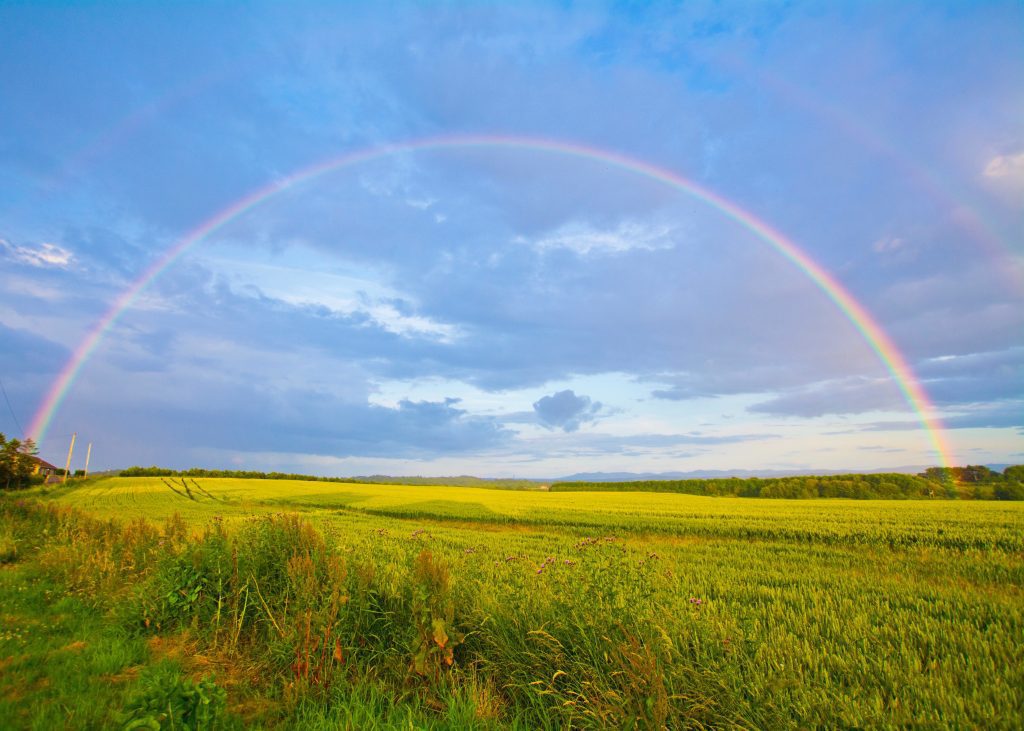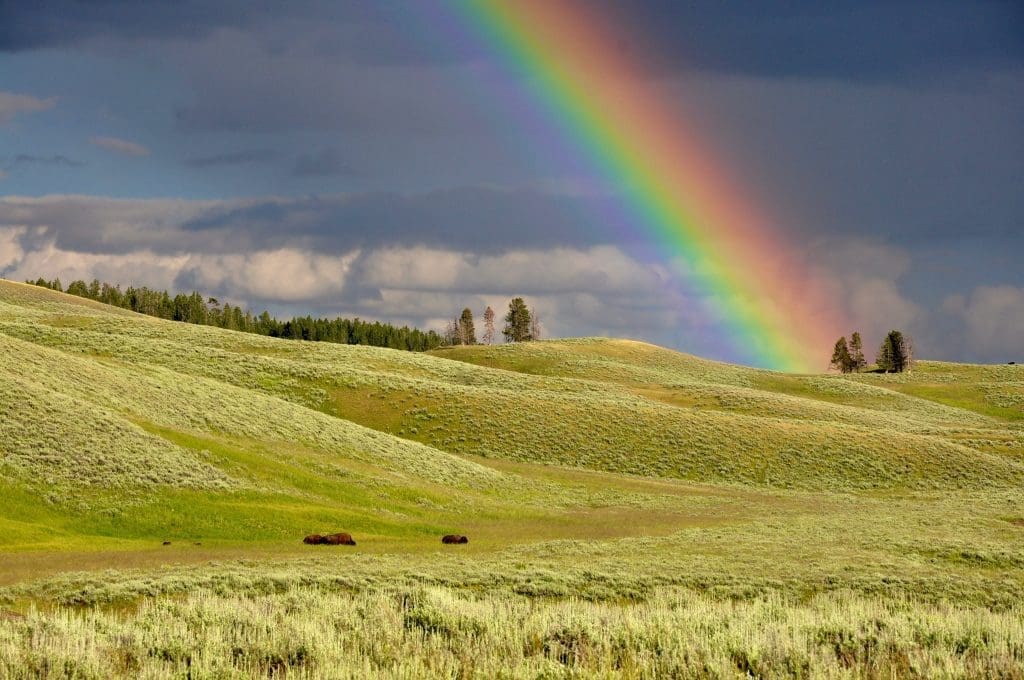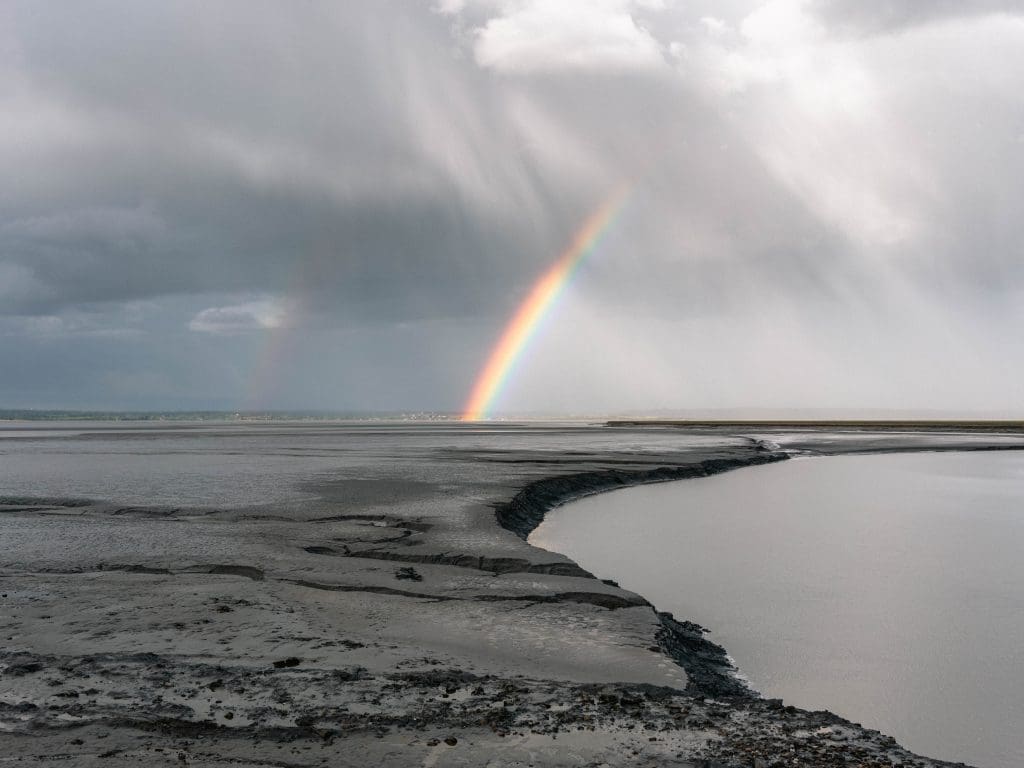Unless you live in Hawaii or other places where rainbows appear frequently, you probably are delighted when you have a chance to photograph rainbows. Everyone stops for a moment to admire the beauty of nature and… take a picture. Unfortunately, rainbows are hard to get not only in nature but also on camera. Because you’re in a hurry, you don’t spend too much time on composition, and the result lacks cohesion and narrative. Also, the strong colors of the rainbow end up in your photos, washed out and desaturated.
To increase your chances to see a rainbow, watch out for rainy days with drizzling or even rainstorms. When the wind breaks the clouds and allows the sun to get through, you should be outside and have your camera ready. Waterfalls are also good places to see a rainbow, even though it won’t be so spectacular. Here are some tips for making sure you take amazing photos of a rainbow.
Focus on composition
Yes, a rainbow is a focal point and will capture the viewer’s attention. Yet, if the rest of the composition is a mess, the result won’t be an artistic photograph. For example, avoid cables, electricity poles, traffic signs, and other mundane objects that detract from the beauty of nature. Pay attention to the edges of the frame, and don’t awkwardly cut objects or people.
Please choose the best section of the rainbow (e.g., the most visible one with the most vibrant colors, etc.) and focus on its surroundings. Even though you can’t change the rainbow’s position, you can change the position of the camera. Decide which leading lines you want to use and what other composition techniques may help you frame the scene.

Photo by Stainless Images on Unsplash
Use manual focus
If you allow the camera to focus by itself, you may end up with a different focal point than the rainbow. Most rainbows are delicate, with low contrast and few details. The camera will prefer to focus on the more detailed background or foreground instead of the rainbow. Use manual focus to make sure you focus on the beautiful colors and capture them as clear and sharp as possible.
The same applies to exposure. Matrix metering may set the exposure for the surroundings and not the rainbow. Try spot metering or center-weighted metering to keep exposure under control and capture natural-looking colors.

Photo by Todd Cravens on Unsplash
Enhance colors
A polarizer filter or color intensifier filter can help you enhance the colors of the rainbow and show them as they are. Mount them before going to look for rainbows. They’re helpful with other landscapes and natural scenes too.
Another way to enhance colors and contrast is to choose a contrasting background. Ideally, you should have a clear background, such as a dark green forest or a blue-gray sky. Try to have the entire frame in focus by using a small aperture and wide-angle lenses.

Photo by Matt Hardy from Pexels
You don’t have to take pictures every time you see a rainbow. Sometimes you need to take all in and enjoy it. Don’t make the perfect shot a life purpose. Learn to see beauty in everything and embrace nature with love and care. When you’re in the right mindset, taking amazing photos will become second nature.

